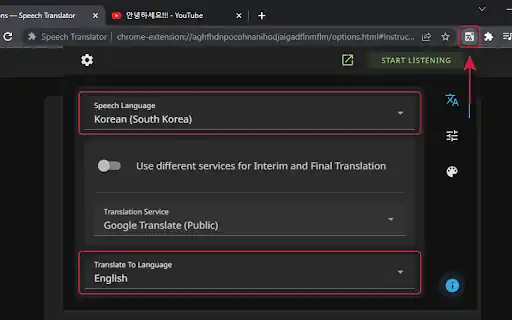Let’s Craft Your Introduction Speech
To create an effective introduction speech, we need some context:
- Purpose: What is the occasion? (conference, award ceremony, meeting, etc.)
- Audience: Who are you speaking to? (colleagues, clients, general public, etc.)
- Speaker: Who are you introducing? (their name, title, accomplishments, etc.)
- Tone: What is the overall mood or atmosphere? (formal, informal, humorous, etc.)
Basic Structure of an Introduction Speech
Typically, an introduction speech follows this structure:
- Greeting the audience: Welcome everyone and establish rapport.
- Creating interest: Grab the audience’s attention with a compelling opening.
- Introducing the speaker: Provide relevant background and accomplishments.
- Building anticipation: Highlight the speaker’s expertise or unique qualities.
- Welcoming the speaker: Introduce the speaker formally and invite them to the stage.
Example Introduction
Occasion: Award Ceremony Speaker: A renowned scientist
Good evening, esteemed colleagues, distinguished guests, and friends.
We gather here tonight to celebrate excellence and innovation. Our world is constantly evolving, and it is because of brilliant minds like the one we are about to honor that we continue to progress.
Please join me in recognizing Dr. [Speaker’s Name], a luminary in the field of [field]. With groundbreaking research and a relentless pursuit of knowledge, Dr. [Speaker’s Name] has made significant contributions to [specific achievements].
It is an honor to introduce a true visionary. Ladies and gentlemen, please welcome the extraordinary Dr. [Speaker’s Name].
Remember:
- Keep it concise and engaging.
- Practice your delivery for confidence.
- Tailor the speech to the specific audience and occasion.
Please provide more details about the specific introduction you need, and I can help you create a customized speech.
Would you like to start with the purpose of the speech?
Pros and Cons
Pros and cons are simply the advantages and disadvantages of something. They are often used to help make decisions by weighing up the positive and negative aspects of different options.
Example: Buying a new car
Pros:
- Improved safety features
- Better fuel efficiency
- Enhanced technology
Cons:
- Higher monthly payments
- Depreciation in value
- Increased insurance costs
Would you like to weigh the pros and cons of something specific?
Pricing: Setting the Value
Pricing is the process of determining the value customers will pay for a product or service. It’s a crucial aspect of business strategy as it directly impacts revenue and profitability.
Key Factors Affecting Pricing
- Product or Service: Its perceived value, quality, and uniqueness.
- Costs: Production, marketing, distribution, and overhead expenses.
- Competition: Competitors’ prices and market share.
- Customer Demand: Willingness to pay and price sensitivity.
- Economic Conditions: Inflation, recession, and consumer spending power.
Common Pricing Strategies
- Cost-Plus Pricing: Adding a markup to the production cost.
- Value-Based Pricing: Setting prices based on perceived customer value.
- Competitive Pricing: Matching or slightly undercutting competitors’ prices.
- Penetration Pricing: Offering a low price to gain market share.
- Skimming Pricing: Setting a high initial price to capitalize on early adopters.
Importance of Pricing
- Revenue Generation: Directly impacts sales and profit.
- Profitability: Determines the business’s overall financial health.
- Customer Perception: Influences how customers perceive the product’s value.
- Competitive Advantage: Can differentiate a business from competitors.
Would you like to explore a specific pricing strategy or discuss a particular product or service?
Alternative
An alternative is a different option or choice. It presents a substitute or replacement for something else.
Examples of Alternatives
- Product alternatives: Instead of buying a car, you could use public transportation, ride a bike, or carpool.
- Decision alternatives: If you don’t like option A, you can choose option B or C.
- Solution alternatives: There are multiple ways to solve a problem.
Importance of Alternatives
- Decision making: Weighing different options helps make informed choices.
- Problem-solving: Exploring alternatives can lead to innovative solutions.
- Creativity: Considering different perspectives encourages creative thinking.
Would you like to explore alternatives for a specific situation or problem?
FAQs: Frequently Asked Questions
FAQs is an acronym for Frequently Asked Questions. It’s a collection of questions and their answers that people commonly ask about a particular topic.
Purpose of FAQs
- Provides quick answers: Users can find information without contacting customer support.
- Improves user experience: Reduces frustration and increases satisfaction.
- Saves time: Both for users and the company.
- Helps with SEO: Can improve search engine rankings.
Common Uses of FAQs
- Product information
- Customer support
- Company policies
- Technical support
- Tutorials
Would you like to see some examples of FAQs or do you have a specific topic in mind?
Conclusion
A conclusion is the final part of something, summarizing its main points and often offering a final judgment or opinion.
Key elements of a conclusion:
- Recapitulation: Briefly restate the main arguments or points.
- Summary: Offer a concise overview of the overall topic.
- Final thoughts: Provide a concluding statement or perspective.
- Call to action: (optional) Encourage the reader to take a specific action.
Would you like to see an example of a conclusion based on a specific topic?
![]()






